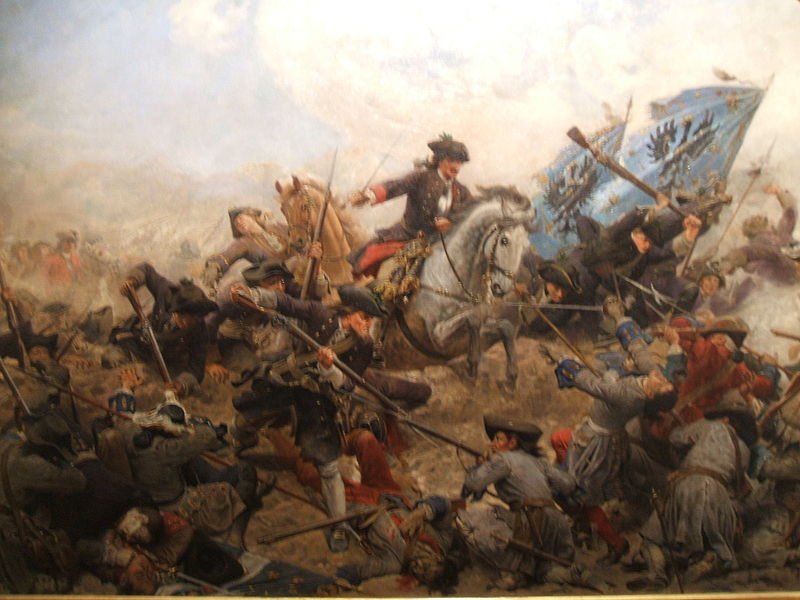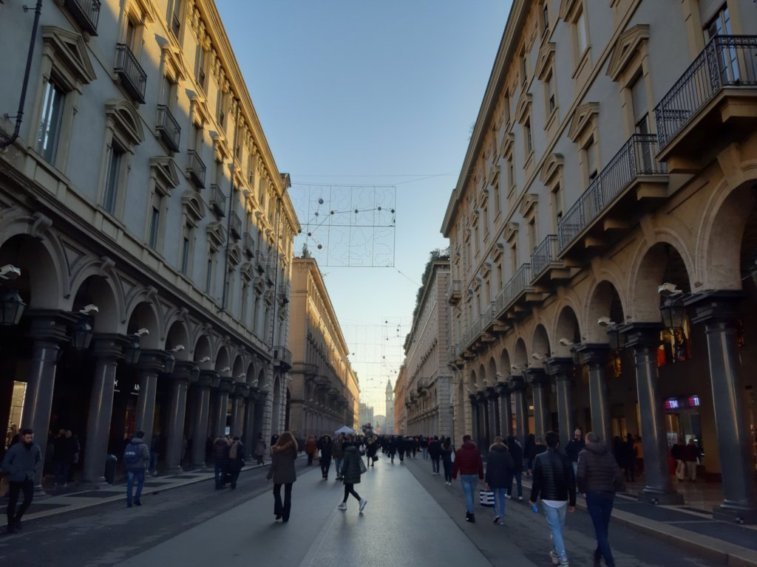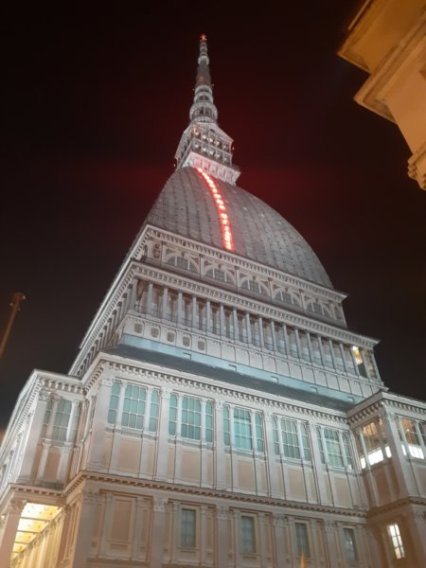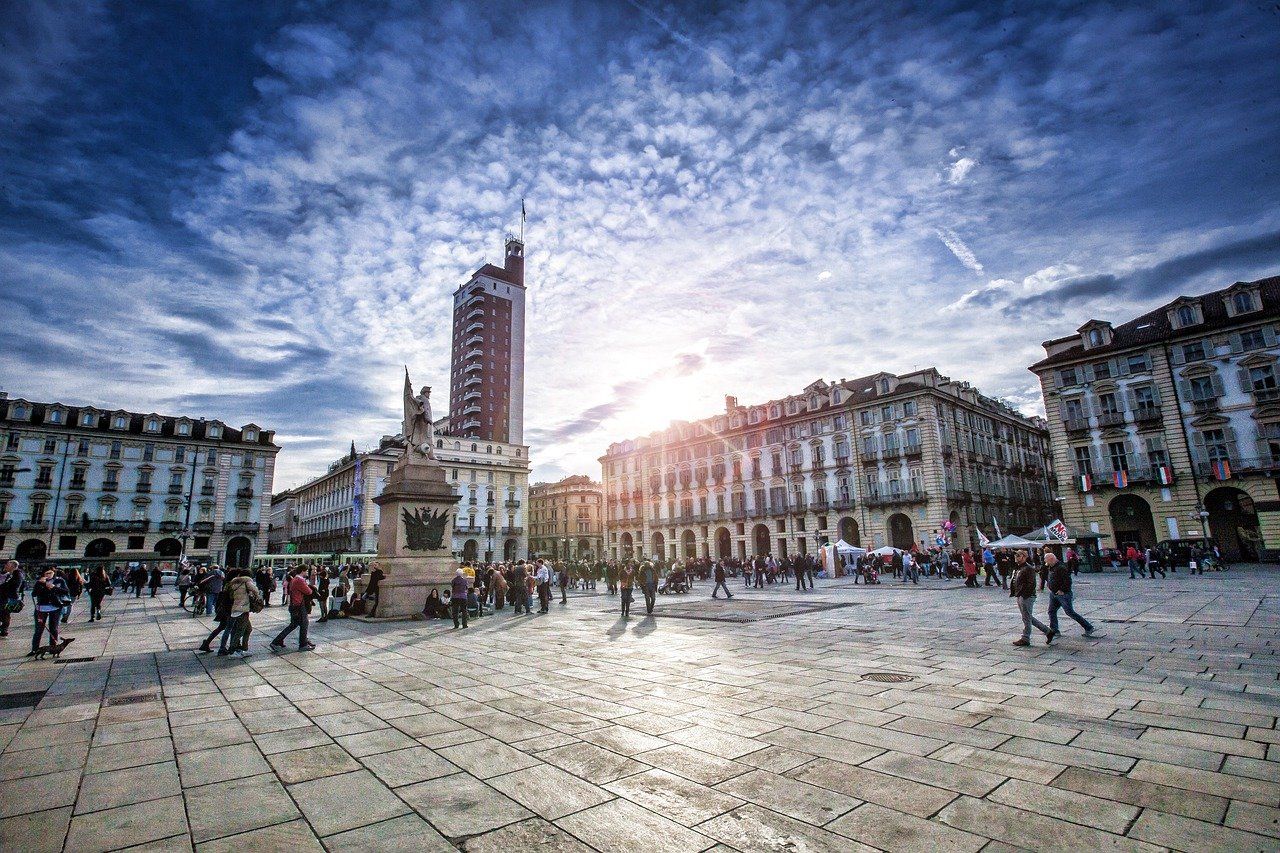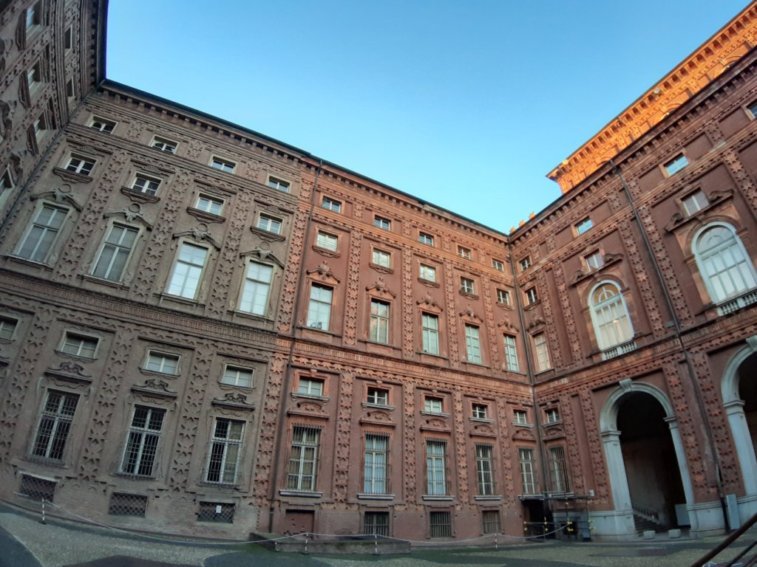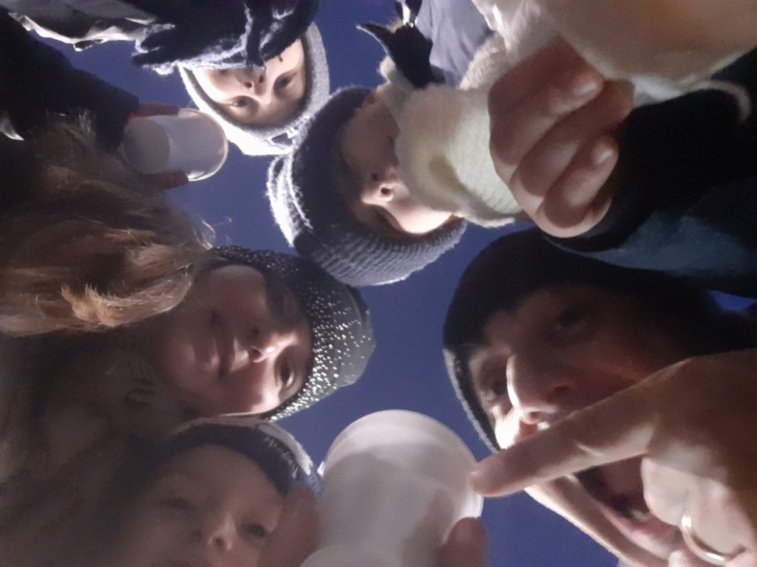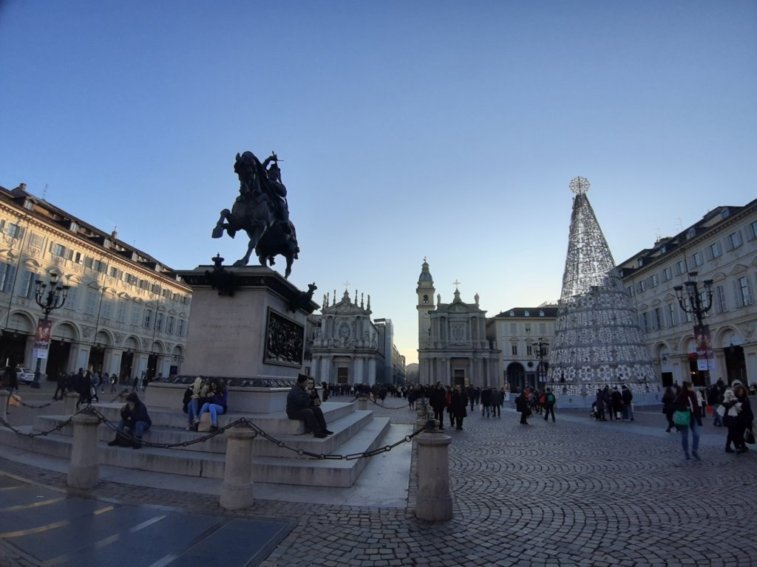
Piazza San Carlo, photo owned by the author
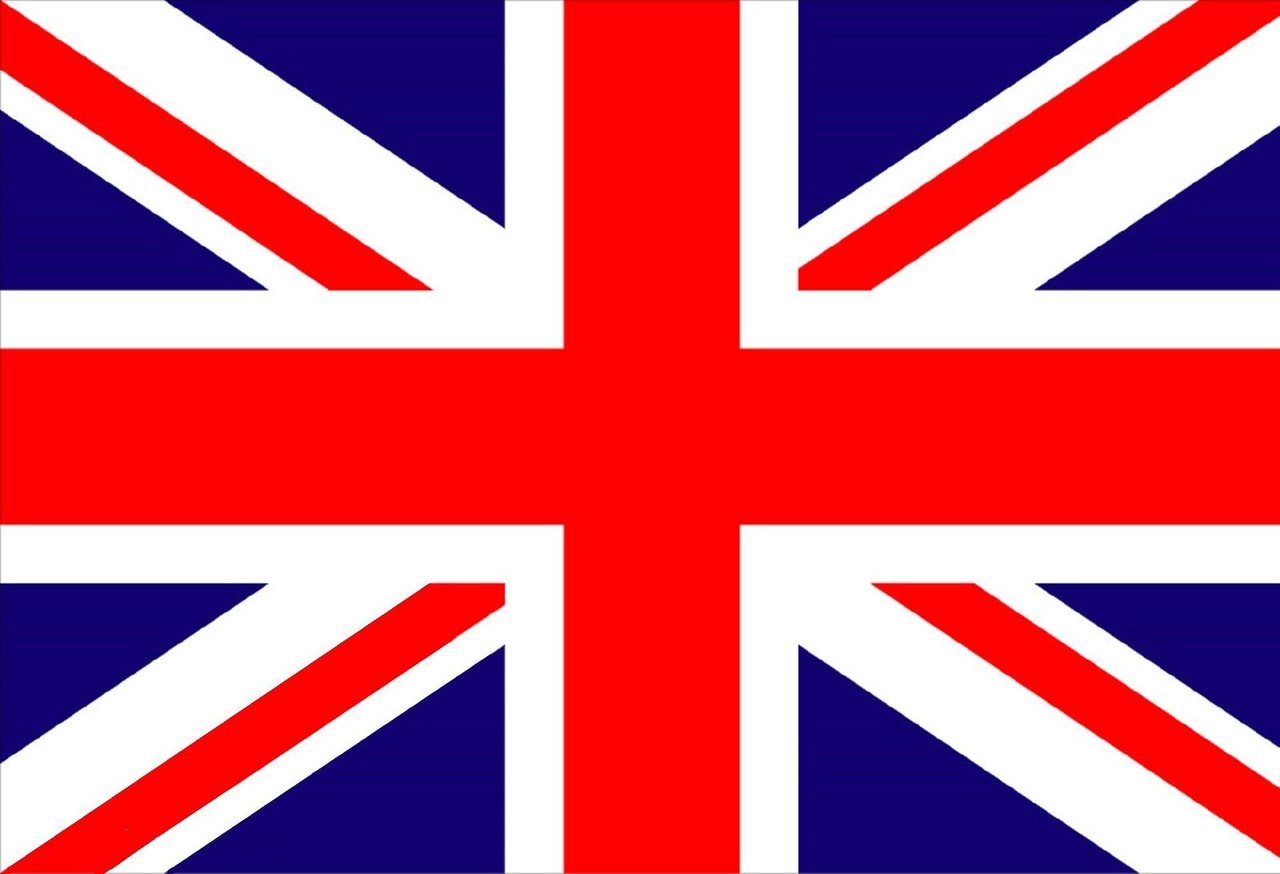
I write this post not only to participate in the wonderful contest Dear Steemians, but also to take the opportunity to make a real declaration of love to the city where I was born, and where I lived for almost thirty years, the only one that today I feel like calling "home"
Turin, unique and inimitable
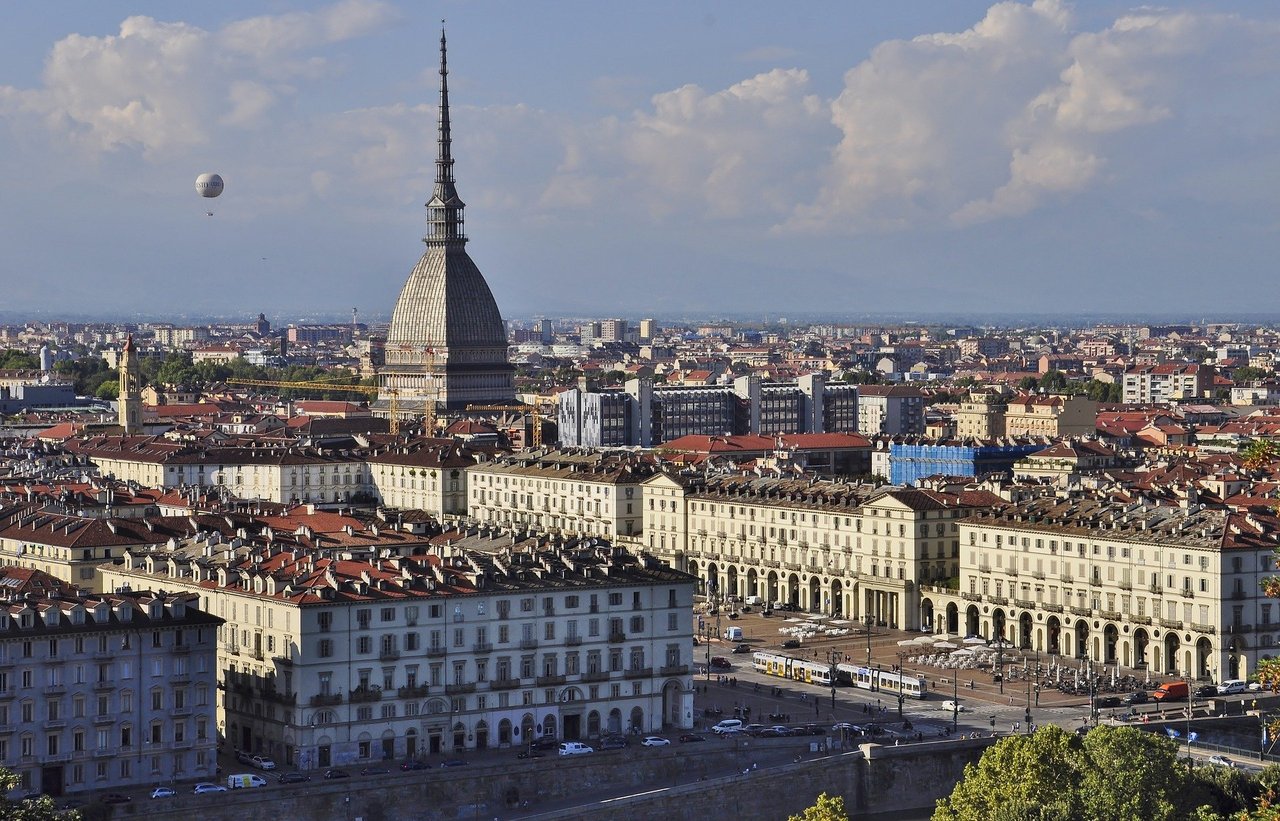
Photo by Pixabay, free of copyrights
Geographically located in the north-west of the Italian peninsula, the Piedmontese capital ideally belongs to the whole nation, both because of its historical events and for the hospitality it has reserved for the inhabitants of all of Italy over the years. Being a Turinese, unlike what happens with other cities of Piedmont, does not mean feeling like an inhabitant of the north, but an integral part of a particular city, which makes integration and multiculturalism its distinctive trait and his pride.
A little bit of history...
The official history of Turin begins in the year 27 BC, when from the ashes of an ancient settlement, called Taurasia, burned by Hannibal on his conquest march towards Rome, the Roman colony Augusta Taurinorum was born.
The process for the unification of Italy started from Turin, when after the Congress of Vienna, Liguria was assigned to Piedmont , and was, as is known, the first capital of the kingdom of Italy, between 1861 and 1865.
Since the beginning of the twentieth century the city has taken the form of an industrial center, which it has maintained over the years, above all thanks to FIAT, a car factory founded by Giovanni Agnelli, but for this reason it was more bombed times during the Second World War, managing to make itself the protagonist of the rebirth of the country, thanks also to the contribution of thousands of migrants from southern Italy.
In 2006 it hosted the XX Olympic Winter Games, completing its transformation, already underway for some years, into a European metropolis.
How to get to Turin?
Turin is connected, with a large part of Italy and Europe, from the Sandro Pertini international airport of Caselle, a municipality located sixteen kilometers from the city, and very well served by state roads and public transport. For those coming from further afield, it is possible to book a flight to Milan, and then reach the city by train or by bus, in just over an hour.
The Torino Porta Nuova station, recently modernized and incorporated into a modern and multifunctional shopping center, connects the city with all the major Italian destinations, reachable via the Frecciarossa trains in a short time (Milan 1h, Florence 3h, Rome 5h, Naples 6h), and with the towns located on the border with France (Bardonecchia and Ventimiglia).
For those coming from abroad by car, Turin can be easily reached from France, via the A32 Torino-Frejus motorway, while, for the more adventurous, is available the Flixbus solution, bus lines that connect it with various European destinations.
What to see
Three or four days may be enough to visit the city in depth, but even in a week-end it is possible to discover most of the beauties that characterize the Piedmontese capital. If you don't have too much time, focus on the beauties of the center:
The Mole Antonelliana, the symbol of the city, designed by the architect Alessandro Antonelli, now houses the spectacular Museum of Cinema. It is 167.5 meters high and from its Belvedere, it is possible to admire the entire city.
The Egyptian Museum, second in importance only to that of Cairo, houses an extraordinary treasure from the time of the pharaohs made up of over 6500 finds.
The Medieval village, located inside the famous Parco del Valentino, the green lung of the city, is nothing more than the faithful reinterpretation of a 15th-century village.
Via Garibaldi, Piazza Castello, Via Roma, Piazza San Carlo, a pedestrian path inside the city center, where you can go shopping for famous brands, or enjoy a bicerin in one of the nineteenth-century cafes.
The Chatedral, the only Renaissance-style church in the city, enlarged during the 1600s to house, inside the baroque chapel of Guarini (Unesco heritage), the Holy Shroud.
The Royal Palace, the most important of the Savoy residences, adjacent to Piazza Castello, a symbol of the power of the Savoy.
If after these attractions you still have a few hours of free time, you can choose to visit one of the remaining beauties of the city:
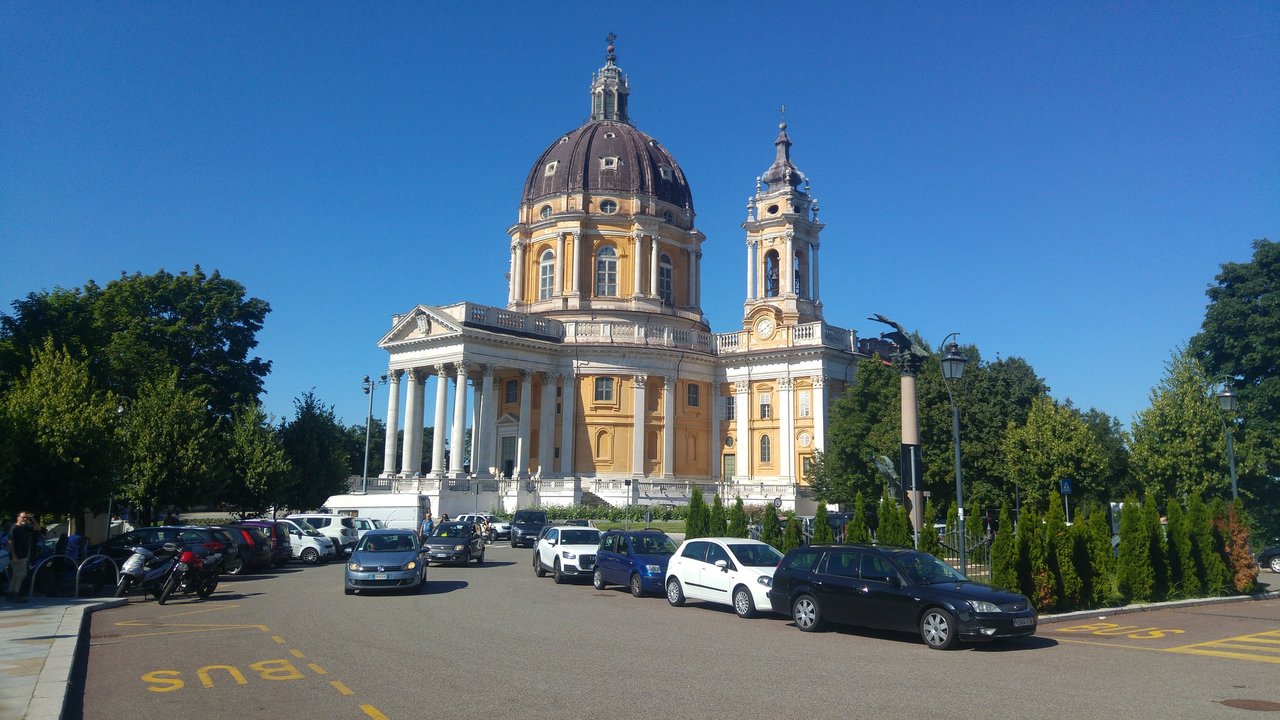
The Basilica of Superga, phot by Pixabay free of copyrights
The Basilica of Superga, located on the homonymous hill and built by the baroque architect Filippo Juvarra. It sadly went down in history for the tragedy that involved the plane that transported the players of the Grande Torino, which crashed into the Basilica wall in 1949.
Palazzo Madama, historic building that now houses the Civic Museum of Ancient Art.
Palazzo Carignano, the place where the first Italian parliament met, today the seat of the Museum of the Risorgimento.
The Automobile Museum, included by The Times magazine among the fifty best museums in the world, hosts about 200 cars, from 80 different automobile manufacturers, including recent and ancient.
Porta Palatina and the Porta Palazzo Market, an ancient Roman entrance to the city, close to the largest open-air market in Europe, spread over almost fifty thousand square meters.
The Allianz Stadium, home to the home matches of Juventus, includes in its area a modern shopping center, a hotel and a state-of-the-art medical clinic.
Where to stay
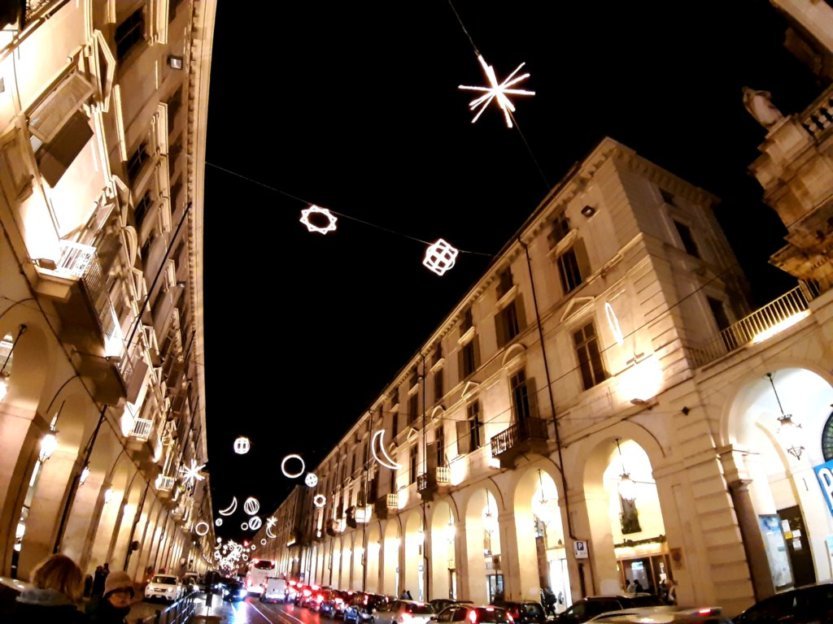
Via Po, photo owned by the author
Turin offers solutions for all budgets, although those related to the central areas are on average much more expensive, hardly settling in a price range below 80-90 euros per night for a double room, in a mid-range hotel. An excellent solution could be to choose one of the houses intended for tourist rentals, located in the semi-central area, which allow savings in the order of 30-40% compared to hotel solutions, as well as offering a much higher feeling of immersion in the city culture. In this regard, the Vanchiglia, Aurora, Parrella and Barriera di Milano neighbourhoods should be kept an eye on, no more than ten minutes by bus from the center.
Contact specialized sites such as Airbnb, with which I have been collaborating for over a year with great satisfaction (mine and my guests) in renting my home.
What to eat
Apart from the Italian pizza, prepared with skill throughout the peninsula, those who intend to stay in Turin for a few days cannot fail to book in the Tre Galline restaurant or at Solferino, to try the real Piedmontese cuisine, with its characteristic dishes:
the Bagna Cauda, prepared especially in the winter period, consists of a long cooking sauce, with garlic, extra virgin olive oil and anchovies as ingredients, to eat together with raw vegetables.
The Piedmontese mixed fry, in which they are breaded, fried and served together salty ingredients, such as liver, lungs, brains, sausage, veal slices, and sweet ingredients, such as semolina, chocolate semolina, amaretto, and apple.
The Great mixed boiled meat, seven main cuts of beef and seven offal served with seven sauces and a complete set of vegetables.
For those with a sweet tooth (like me), don't miss a stop in the artisan chocolate shop Guido Gobino to taste the Gianduiotti, chocolates in the shape of an inverted boat, the Cri-Cri, dark chocolate balls containing a hazelnut and covered with sugar pralines, and the Cremini, cube-shaped and composed of two layers of gianduia chocolate interspersed with one with hazelnuts. Finally, before leaving, don't forget to order, in one of the cafés in the center, a glass of Bicerin, a historic Piedmontese hot drink made up of coffee, chocolate and milk cream.
Final conclusions
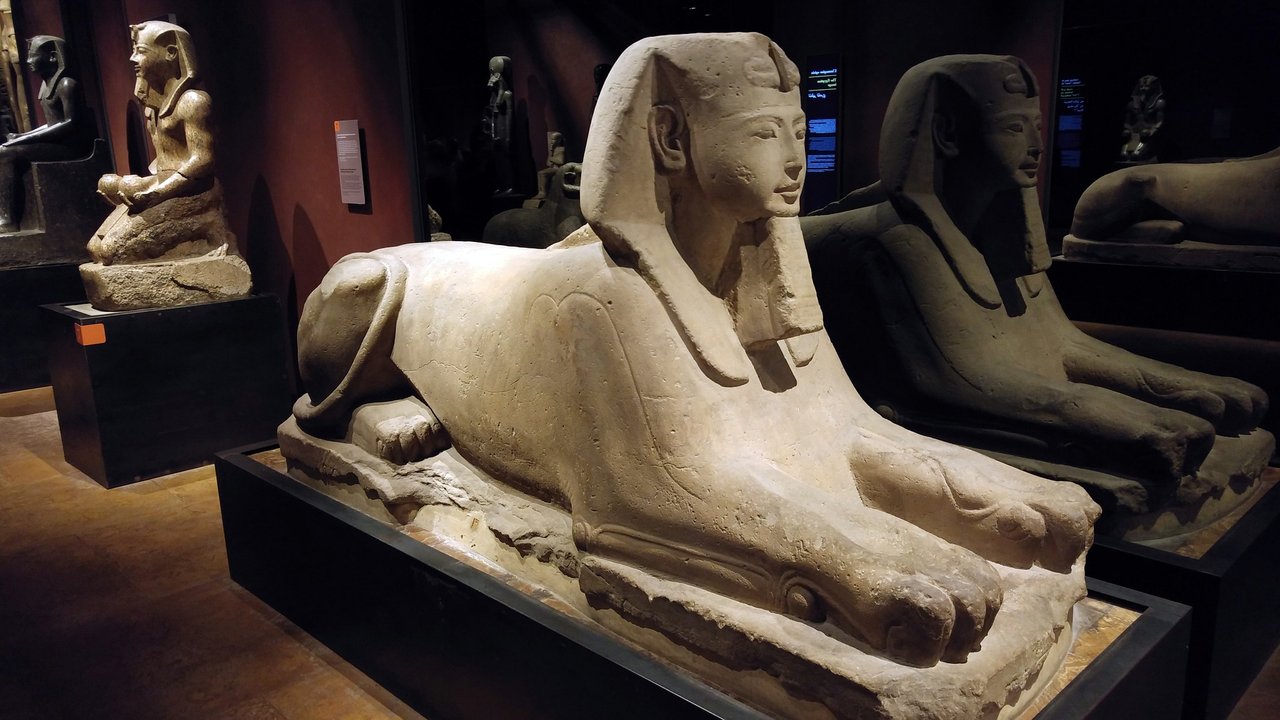
Egyptian Museum. Photo by Pixabay free of copyrights
Turin is a city full of life, which will welcome you with open arms. The best time to visit it is in spring, in May, or between September and October, but also a winter visit, in the streets of the center immersed in the Christmas atmosphere, among the stalls of handicraft products and hot drinks, could be unforgettable.
If you like my location, vote by copying and pasting the link in a comment! Thanks!


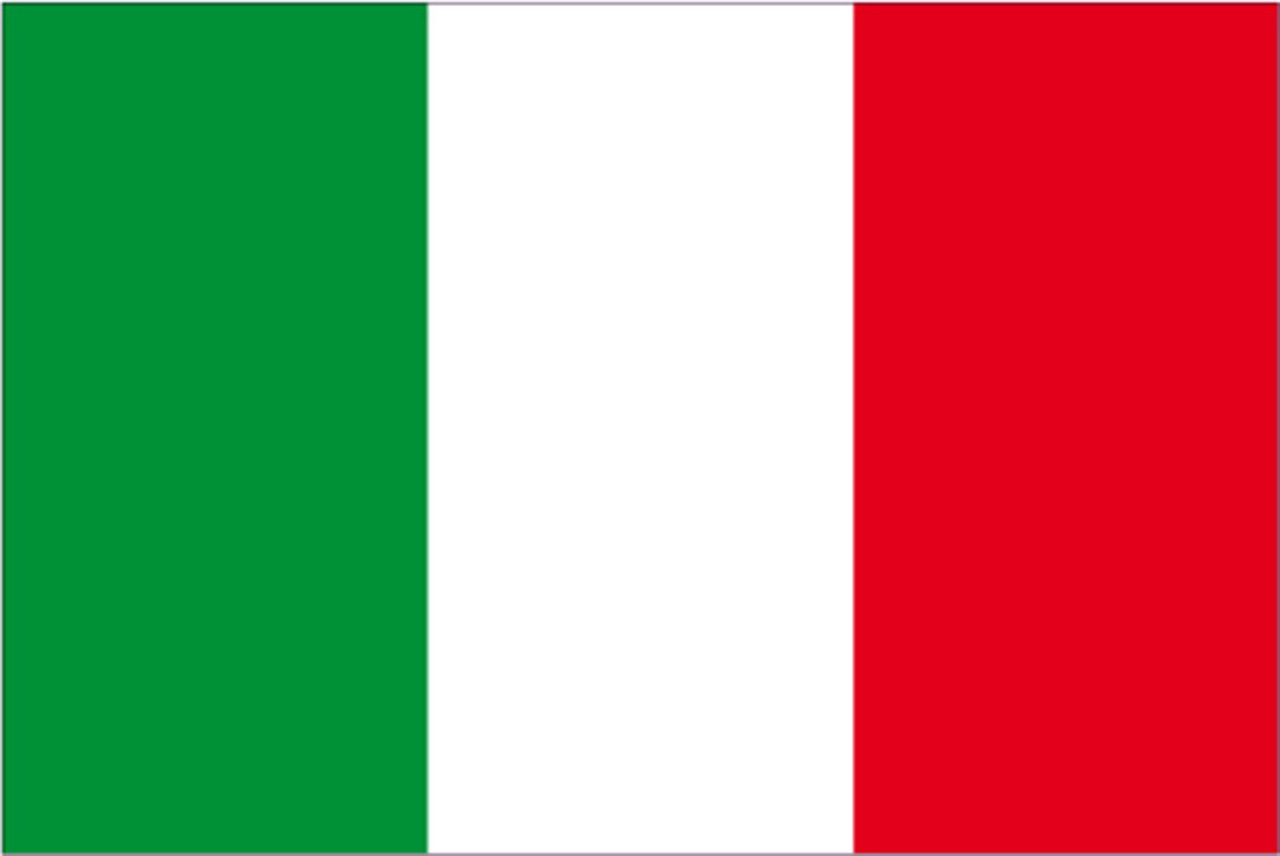
Scrivo questo post non solo per partecipare allo splendido contest "Cari Steemiani", ma anche per cogliere l'occasione di fare una vera e propria dichiarazione d'amore alla città nella quale sono nato, e dove ho abitato per quasi trent'anni, l'unica che ad oggi mi sento di chiamare "casa"...
Torino, unica e inimitabile

Photo by Pixabay, free of copyrights
Geograficamente posto a nord-ovest della penisola italiana, il capoluogo piemontese appartiene idealmente a tutta la nazione, sia a causa delle sue vicende storiche, sia per l'accoglienza che nel corso degli anni ha riservato agli abitanti di tutta Italia. Essere torinese, a differenza di ciò che capita con le altre città del Piemonte, non significa sentirsi un abitante del nord, ma parte integrante di una città particolare, che fa dell'integrazione e della multiculturalità il suo tratto distintivo e il suo orgoglio.
Un po' di storia...
La storia ufficiale di Torino inizia nell'anno 27 a.C., quando dalle ceneri di un antico insediamento, detto Taurasia, bruciato da Annibale nella sua marcia di conquista verso Roma, nacque la colonia romana Augusta Taurinorum.
Da Torino è partito il processo per l'unificazione dell'Italia, quando dopo il Congresso di Vienna la Liguria venne assegnata al Piemonte, ed è stata, come noto, la prima capitale del regno d'Italia, tra il 1861 e il 1865.
Già dall'inizio del novecento la città prende la forma di polo industriale, che ha mantenuto poi nel corso degli anni, soprattutto grazie alla FIAT, fabbrica automobilistica fondata da Giovanni Agnelli, venendo per questo più volte bombardata durante la seconda guerra mondiale, ma rendendosi protagonista della rinascita del Paese, grazie anche all'apporto di migliaia di migranti dal sud Italia.
Nel 2006 ospita i XX Giochi Olimpici invernali, completando la sua trasformazione, già in atto da alcuni anni, in metropoli europea.
Come arrivare
Torino è collegata, con buona parte dell'Italia e dell'Europa, dall'aeroporto internazionale Sandro Pertini di Caselle, comune posto a sedici chilometri dalla città, e ottimamente servito tramite strade statali e mezzi pubblici. Per chi proviene da più lontano è possibile prenotare un volo con destinazione Milano, per poi raggiungere la città in treno o con l'apposito autobus, in poco più di un'ora.
La stazione di Torino Porta Nuova, rimodernata da poco e inglobata all'interno di un moderno e polifunzionale centro commerciale, collega la città con tutte le destinazioni maggiori italiane, raggiungibili attraverso i treni Frecciarossa in breve tempo (Milano 1h, Firenze 3h, Roma 5h, Napoli 6h), e con le località poste al confine con la Francia (Bardonecchia e Ventimiglia).
Per chi proviene dall'estero in auto, Torino è comodamente raggiungibile dalla Francia, attraverso l'autostrada A32 Torino-Frejus, mentre per i più avventurosi è disponibile la soluzione Flixbus, linee di pulman che la collegano con varie destinazioni europee.
Cosa vedere
Per visitare approfonditamente la città possono bastare tre o quattro giorni, ma anche in un week-end è possibile scoprire la maggior parte delle bellezze che caratterizzano il capoluogo piemontese. Se non disponete di troppo tempo concentratevi sulle bellezze del centro:
La Mole Antonelliana, il simbolo della città, progettata dall'architetto Alessandro Antonelli, oggi ospita al suo interno anche lo spettacolare Museo del Cinema. E' alta 167,5 metri e dal suo belvedere è possibile ammirare l'intera città.
Il Museo Egizio, secondo per importanza solo a quello del Cairo, ospita al suo interno uno straordinario tesoro dell'epoca dei faraoni composto da oltre 6500 reperti.
Il Borgo medioevale, posto all'interno del celebre Parco del Valentino, polmone verde della città, altro non è che la fedele riproposizione di un villaggio del XV secolo.
Via Garibaldi, Piazza Castello, Via Roma, Piazza San Carlo, percorso pedonale all'interno del centro città, nel quale dedicarsi allo shopping di marchi famosi, o gustare un bicerin in uno dei caffè ottocenteschi.
Il Duomo, unica chiesa in stile rinascimentale della città, ampliato nel corso del '600 per ospitare, all'interno della cappella barocca del Guarini (patrimonio dell'Unesco), la Sacra Sindone.
Il Palazzo Reale, la più importante delle residenze sabaude, adiacente a Piazza Castello, simbolo del potere dei Savoia.
Se dopo queste attrazioni disponete ancora di qualche ora di tempo libero, potete scegliere di dedicarvi ad una delle restanti bellezze della città:

The Basilica of Superga, photo by Pixabay free of copyrights
La Basilica di Superga, posta sulla collina omonima e realizzata dall'architetto barocco Filippo Juvarra. E' passata tristemente alla storia per la tragedia che ha coinvolto l'aereo che trasportava i giocatori del Grande Torino, schiantatosi contro il muraglione della Basilica nel 1949.
Palazzo Madama, edificio storico che oggi ospita il Museo Civico dell'Arte Antica.
Palazzo Carignano, luogo nel quale si è riunito il primo parlamento italiano, oggi sede del Museo del Risorgimento.
Il Museo dell'automobile, inserito dalla rivista The Times tra i cinquanta migliori musei al mondo, ospita circa 200 auto, di 80 case automoblistiche diverse, tra recenti e antiche.
Porta Palatina e il Mercato di Porta Palazzo, antico ingresso romano della città, vicina al più grande mercato all'aperto d'Europa, disposto su quasi cinquantamila metri quadrati.
L'Allianz Stadium, sede delle partite interne della Juventus, comprende nella sua area un moderno centro commerciale, un hotel e una clinica medica all'avanguardia.
Dove alloggiare

Via Po, photo owned by the author
Torino offre soluzioni per tutte le tasche, sebbene quelle legate alle zone centrali siano mediamente molto più care, attestandosi difficilmente in un range di prezzo inferiore agli 80-90 euro a notte per camera doppia, in un hotel di media categoria. Un'ottima soluzione potrebbe essere scegliere una delle abitazioni destinate agli affitti turistici, poste in zona semi-centrale, che permettono risparmi nell'ordine del 30-40% rispetto alle soluzioni alberghiere, oltre ad offrire una sensazione di immersione nella cultura cittadina molto superiore. A questo proposito da tenere d'occhio sono i quartieri Vanchiglia, Aurora, Parrella e Barriera di Milano, distanti non più di dieci minuti d'autobus dal centro.
Rivolgetevi a siti specializzati come Airbnb, con il quale collaboro da oltre un anno con grande soddisfazione (mia e dei miei ospiti) nell'affittare la mia casa.
Cosa mangiare
A parte l'italica pizza, preparata con maestria in tutta la penisola, chi intende soggiornare a Torino per qualche giorno non può esimersi dal prenotare nel ristorante Tre Galline o da Solferino, per provare la vera cucina piemontese, con i suoi piatti caratteristici:
la Bagna Cauda, preparata soprattutto nel periodo invernale, consiste in una salsa a lunga cottura, con aglio, olio extra vergine d'oliva e acciughe come ingredienti, da mangiare insieme a verdure crude.
Il Fritto misto alla piemontese, nel quale vengono impanati, fritti e serviti insieme ingredienti salati, come fegato, polmoni, cervella, salsiccia, fettine di vitello, e ingredienti dolci, come semolino, semolino al cioccolato, amaretto e mela
Il Gran bollito misto, sette tagli principali del manzo e sette frattaglie servite con l'accompagnamento di sette salse e un set completo di verdure.
Per i più golosi (come me), imperdibile una tappa nella cioccolateria artigianale Guido Gobino per assaggiare i Gianduiotti, cioccolatini a forma di barca rovesciata, i Cri-Cri, palline di cioccolato fondente contenente una nocciola e ricoperti di praline di zucchero, e i Cremini, a forma di cubo e composti da due strati di cioccolato gianduia inframezzati da uno alle nocciole. Prima di andare via, infine, non dimenticate di ordinare in uno dei caffé del centro un bicchiere di Bicerin, storica bevanda calda piemontese composta da caffé, cioccolata e crema di latte.
Conclusioni

Egyptian Museum. Photo by Pixabay free of copyrights
Torino è una città piena di vita, che vi accoglierà a braccia aperte. Il periodo migliore per visitarla è in primavera, nel mese di Maggio, o a cavallo tra Settembre e Ottobre, ma anche una visita invernale, nelle vie del centro immerse nel clima natalizio, tra le bancarelle di prodotti artigianali e bevande calde, potrebbe risultare indimenticabile.
Se ti piace la mia location, vota copiando e incollando il link nei commenti! Grazie!




